Serious harms and a death at the Ayahuasca Foundation
Clients and former employees of the 17-year-old school say its ‘initiation course’ has become dangerously unsafe, and Foundation owner Carlos Tanner is not heeding their concerns
To download this article for free go here.
The Ayahuasca Foundation is one of the oldest and best-known ayahuasca retreat centres in the world. The 17-year-old Foundation offers healing retreats at one centre in Peru, and, at another centre, two-month initiation courses offering Westerners the opportunity to study Shipibo curanderismo under the guidance of a maestro. Thousands of people have been to ayahuasca retreats at the Foundation, and it has many five-star reviews on Retreat Guru. Many of the graduates from the initiation course went on to set up their own centres or ayahuasca churches around the world. Carlos Tanner, its founder, is a prominent figure in plant medicine culture and even featured in the Netflix series Down To Earth, with Zac Efron.
But in January of this year, tragedy struck, when an attendee of the initiation course had a heart attack during an ayahuasca ceremony. His name was Diogenes Ianakiara, founder and CEO of blockchain and cryptocurrency company Klever.
Carlos Tanner, founder and owner of the Ayahuasca Foundation, says that Ianakiara did not disclose he had a heart condition in his pre-retreat screening. Tanner says:
It was definitely one of the worst times of my life. It was devastating for me to go through the whole process, to have to return the body to his family. It’s not a great time for me. It shook my faith in the world of medicine. It’s like a test of faith: ‘why would God let this happen to me?’ I’ve been thankful that the community has been really supportive because obviously I thought, should we just stop this whole thing?
However, attendees who were at the retreat centre say they believe Ianakaria did disclose he was on blood pressure medication the first day of the retreat, and was still allowed to take part in the first ceremony by the facilitators. And several attendees and former facilitators at the Foundation say they have been warning Tanner for months that there are serious problems at the Foundation with screening, with facilitator training and ethics, and with Tanner’s failure to respond to the community’s concerns.
Indeed, two months after Dio’s death, in April 2025, an American man, Frank, was allowed to join the Foundation’s two-month, 22-ceremony initiation retreat, despite other clients warning Tanner he was showing signs of aggressive psychosis. Frank turned up at the bus to go to the retreat with a woman he knew, Martha, and insisted she could come on the retreat as well. Tanner let her join the two-month intensive retreat after a brief conversation outside the bus, without any health screening (Martha, like Dio, had high blood pressure). Frank then forced Martha to have sex with him during the retreat because ‘the spirits told him to’. He was finally ejected from the course, a few days before the end, and subsequently threatened Martha with death by black magic.
There are several other incidents of concern at the Foundation over the last two years, including facilitators flirting with and initiating sexual contact with attendees during or soon after retreats; attendees and volunteers not being screened for psychosis and then having psychotic episodes during retreats; attendees being accepted on the two-month ‘initiation course’ despite never having drunk ayahuasca before; and attendees thinking they are curanderos ready to serve medicine to others after the two-month course, despite not having received adequate training. Clients and employees have repeatedly warned Tanner about these issues, but they say they were brushed off. Tanner denies these allegations and responds to them below.
The Ayahuasca Foundation - has the pioneering organisation lost its way?
Carlos Tanner founded the Ayahuasca Foundation in 2009, after moving to the Amazon jungle and apprenticing with a shaman in 2004 when he was recovering from opiate addiction. Tanner’s first maestro was Don Juan, pictured with Tanner above. When Don Juan died, Tanner started to work with three other Shipibo maestros, all from one family . The Foundation now operates out of two centres in the Peruvian Amazon. The first centre, Riosbo Retreat & Research Center, is owned by the Foundation and offers 10-day and 18-day healing retreats run by two Shipibo maestros, Dona Angela and Don Rono, who are siblings. Riosbo was constructed thanks to a donation from the Grant Town Foundation. It collaborates with other organisations such as veterans group Heroic Hearts, and the research non-profit Onaya Science, which has published research showing the therapeutic benefits of the Foundation’s retreats funded by Grant Town.
The second centre is called Kesten Rono, and is owned by a Shipibo maestro called Don Enrique (a sibling of Dona Angela and Don Rono) who partners with the Foundation. The Foundation and Don Enrique offer a two-month ‘initiation course’ to help western students become Shipibo-trained curanderos. In the words of the Foundation’s website: ‘This course is a condensed version of an ancestral initiation, teaching the core principles of Shipibo ayahuasca plant medicine in Peru.’ The course is based on the copious notes Tanner made from his own apprenticeship.
The initiation courses happen four times a year. The Ayahuasca Foundation signs up around 15 attendees (or pasajeros), who do an initial screening zoom with Tanner to see if they’re appropriate for the course. If they’re accepted, they each pay $7000 in cash when they arrive in Iquitos, which must make the Foundation around half a million dollars a year in revenues, just from the initiation course. The two-month course is then run and taught largely by three western Ayahuasca Foundation facilitators - two paid facilitators and one volunteer facilitator - who teach the classes and help during the ceremonies, with Don Enrique officiating over the 22 ayahuasca ceremonies.
Pasajeros are taught about the path of the Shipibo curandero then, at the end of the course, they are connected to a supplier of ayahuasca in Iquitos, and sent on their way. Some alumni then come back to the Kesten Rono centre to do dietas - a traditional shamanic training where an apprentice isolates themselves and deepens their relationship with a particular plant ally for a month or longer. Those doing dietas pay Don Enrique a daily rate for board and food and the ability to sit in on ayahuasca ceremonies.
Tanner estimates that around 800 people have been through the 50 or so initiation courses the Foundation has run over the last 16 years, and many of them have gone on to run ceremonies or set up their own centres or ayahuasca churches in Europe and North America. Dave, who did the initiation course in 2018 and subsequently co-founded an ayahuasca church in the US, says: ‘I have a lot of respect for the Foundation, just for offering the type of education or program that they offer, because I don't think there really is anything quite to match it at this time.’
Nonetheless, in interviews with me, 14 alumni and ex-employees raised serious concerns about standards on the initiation course. These concerns can be grouped into four main topics:
Insufficient screening and preparation of students is causing serious harms
Facilitators are inexperienced, and sometimes flirt with students during courses and have sexual contact with them soon after, without being fired.
Students leave the course and serve medicine with insufficient training, putting others at risk
Tanner has not been responsive to clients and staff’s warnings and complaints
Insufficient screening and preparation of students is causing serious harms
In January, Diogenes Ianakiara, 39-year-old CEO of the Klever cryptocurrency and blockchain, died of a heart attack in an ayahuasca ceremony during the Foundation’s initiation course. Tanner tells me that Ianakiara failed to disclose any heart issues or that he was taking blood pressure medication in his screening form:
His friend told me [after Dio’s death] that he had a heart condition and that he was hoping that the program was going to heal that, but he [Dio] did not disclose the heart condition to me. I wouldn't have let him do the course if he had.
I later asked Tanner by email if I could see Dio’s screening form but didn’t receive a reply. The Foundation’s website does warn that heart conditions or chronic high blood pressure ‘should be discussed with staff’. The question is whether Dio did raise the issue with staff before or during the retreat.
Dave was another pasajero on the same course. He tells me:
I got to know Dio in Iquitos before the course began. He said something before the course: ‘My father died of a heart attack, and that is in me too.’ Everyone on the course knew he was taking medication for high blood pressure, and I’m almost certain he told the facilitators on the course and asked them if he should stop taking the medication.
I asked Tanner and one of the facilitators on this particular course (Tony) by email if Dio told the facilitators at the start of the retreat that he had recently stopped taking medication for high blood pressure but I didn’t get a reply. Don Enrique says:
It’s very sad. This was a good man, but unfortunately Carlos [Tanner] sent me this man and didn’t tell me he had a disease. And the man didn’t tell me either, although he spoke Spanish. I always ask, do you have high blood pressure? Then sadly he died, perhaps of fright. Afterwards we found he had a quantity of pills - usually I don’t permit people to take pills [during a retreat].
Dave says that Dio had taken ayahuasca many times before. During the first ceremony, Dio said ‘help’. One of the facilitators, Tony, went over and sang to him. Dave says:
After about ten minutes, Tony walked back to Don Enrique in the centre and told him Dio had stopped breathing. At that point one of the guests said ‘I’m a doctor’, although in fact he was a chiropractor. He, the facilitators and Don Enrique then tried to give Dio CPR for 90 minutes or so. Then Don Enrique left and came back with six Shipibo young men. They carried Dio out on his mattress and put him in his tambo [a jungle hut]. The next day Carlos came and took his body away to Lima.
I asked Tanner via email if it’s true Dio received no professional medical assistance when he was dying but he didn’t reply. The Foundation says on its website that its retreat centres are located 90 minutes from the nearest medical clinic.
Rebecca, a former doctor who was dieting at the Kesten Rono center when Dio passed away, tells me:
I’m really surprised the facilitators didn't consult or talk to me about [his blood pressure and blood pressure medication], given that they knew I had a medical background. Certain classes of blood pressure medication can interact with ayahuasca leading to adverse health effects. In general, someone who has a history of high blood pressure and, even more concerning, an underlying heart condition is not an appropriate candidate for ayahuasca use as ayahuasca can elevate blood pressure and heart rate creating extra strain on the heart. This can be dangerous and even fatal for someone with these types of underlying health conditions.
Dave says:
At my ayahuasca church, we use a screening form that specifically asks about heart issues. I really wish that they had had one of those automated electric defibrillators. I think that could have saved Dio’s life.
Rebecca subsequently reached out to Tanner to suggest he should have a defibrillator on site, that someone with a medical background should do a more thorough screening, and that one of the facilitators should always be trained in CPR and basic life support. I asked Tanner what he thought of these suggestions but didn’t hear back.
Further screening issues
It’s very rare for ayahuasca ingestion to be fatal, although it can happen - the psychological effects can lead to accidents, or violence, or in very rare cases it can cause heart attacks or other fatal physiological reactions (see ICEERS’ 2023 report on ayahuasca-related deaths). This appears to have been the only death at the Foundation in its 17-year existence. But this was not the only incident of serious harm at the Foundation even this year. Two months after Dio died, at the next initiation course in April, pasajeros were shocked by the cavalier attitude to client safety shown by Tanner. Malcolm, one of the pasajeros, tells me:
The issues started before we even left Iquitos. There was a guy on the course [Frank]. I asked him if he’d dieted before, and he said he’d dieted on cocaine and that the birds were telling him to do it. The next morning we were waiting in the courtyard for the bus, and this man says ‘Hey Carlos, mind if this woman [Martha] comes on the course?’ Carlos asks her if she has the $7000, and the man says ‘I’ll pay for her’. He did not ask her one question about her health history, her mental health, did not do any sort of intake form.
Martha confirms to me: ‘I was not screened prior to joining the group as a student and I had underlying health issues. I have experienced high blood pressure and panic attacks.’
Malcolm goes on:
As soon as we got to camp, this guy suddenly started going all aggressive to someone, in front of Carlos, saying the birds were telling him to do it. I said to Carlos ‘I don't feel safe with this guy…What happens if the birds tell him to attack somebody?’ And Carlos was just like, ‘oh we'll just see how it goes’.
I asked Tanner by email about this episode and his alleged response to it but didn’t hear back.
Martha had previously met Frank in India and they reconnected in Iquitos. She is vulnerable, with a history of mental illness, while Frank has also apparently been sectioned for psychosis and had substance abuse issues. Martha tells me:
He had delusional thoughts and even now still claims that he has 23 beings inside of his body that tell him what to say and do at all times. He was not properly screened and he caused everyone on the course distress and even had me controlled to the point where we were breaking the rules because he was constantly saying that his guides wanted us to have sex even while being told that sex was not allowed on the course. I suffered a lot.
According to Malcolm, Frank was also smoking Bufo every day, and screaming during the ayahuasca ceremonies. Malcolm thinks he was training to be a brujo, or black magician. Don Enrique says:
[Frank] was a wolf. He took a lot of drugs. He threatened the woman he was with and wanted to have sex with her. Finally she came to me and said ‘maestro, I need protection from him because the wolf threatens to kill me when I don’t accept to have sex with him’. I have my rules, and Carlos knows very well I can’t help someone if they don’t want to get better and they get aggressive. So we had to remove him from the course.
Frank was removed five days before the end of the two-month course, and reportedly then sent death threats to Martha, suggesting she could die from black magic. Malcolm thinks he should never have been accepted on the course: ‘He was actually causing this girl significant harm, and was abusing her physically, mentally, spiritually. We had someone drop out at the last minute, so Carlos had a bit of a gap in the cash flow, so when this girl came along, he was so excited about it and keen to get her on the course. I was honestly horrified by the lack of due diligence and the lack of concern for safety.’
After the retreat, when Frank’s payment for Martha failed to go through, Tanner tried to charge her the full cost of the course (according to Martha). I asked Tanner by email why he allowed both Frank and Martha on the course, without proper screening, two months after another pasajero had died. I also asked if Martha was accepted because of a ‘gap in the cash flow’. He didn’t reply.
I came across another instance of a student who was allowed onto the course despite disclosing a history of psychosis on their screening form. They were not asked about this in their screening conversation with Tanner, they tell me, nor were they prepared for the fact this is a 22-ceremony course. They subsequently had a psychotic episode on a Foundation course which it took them months to recover from. They still feel they benefitted from their ayahuasca experiences. I asked Tanner about this example of inadequate screening but didn’t hear back.
Seven other people I interviewed said they thought Tanner’s screening for initiation courses was insufficient. They were surprised that students were accepted for such an intense course despite little or no experience of ayahuasca, and in some cases having serious mental health issues. Jamie took the Foundation’s one-month healing retreat in 2019 and then the initiation course in 2023. They went on to be a volunteer facilitator and then a main facilitator on the initiation course. Jamie tells me: ‘I don't think there is any kind of a proper screening process for the initiation course…it seemed like anyone who shows an interest in the programme was accepted.’ Students think that profit is taking priority over client safety.
I asked Tanner for his response to pasajeros’ and ex-facilitators’ concerns over what they perceive as inadequate screening and preparation of students. Tanner said:
In terms of how I evaluate when I look at the intake forms, there's a lot of stuff that I'm looking at, but I will say that a person's level of experience [with ayahuasca] isn't the most important…There were definitely times when I have accepted someone that had never drank ayahuasca before. They were amazing. It was clear that they had tremendous ability.
2) Facilitators are reportedly inexperienced and some flirt with students during courses then have sex with them shortly afterwards
According to Rebecca, until about two years ago, the Ayahuasca Foundation’s initiation retreats were facilitated by experienced facilitators - although there were previous incidents of facilitators flirting with students during retreats then having sex with them soon after - Dave tells me this occurred on a Foundation course he took in 2018.
About two years ago, two facilitator couples, both of them quite experienced, left the Foundation. This gave Tanner a human resources challenge that faces many psychedelic retreat centres in developing countries - how to find qualified facilitators prepared to work in demanding conditions, far from home. He appears to have responded by fast-tracking people through the process. Some people would do the initiation course as a pasajero, then return for the following course as a volunteer facilitator, and then return for the next course as one of the paid facilitators. Sometimes, initiation courses would be run by two new and inexperienced facilitators. Rebecca herself saw this when she was a volunteer facilitator in 2024. She says:
As a volunteer facilitator, you’re supposed to be learning from the main facilitators how to facilitate. But the two facilitators on my course - Tony and Hans - were both new to it. I don’t feel like any of us knew what we were doing.
Multiple interviewees said they felt facilitators on the initiation course were not always able to hold space well or to support students through intense psychological processes and trauma-release. The course is framed, after all, as an apprenticeship in curanderismo rather than a healing retreat, so there is little if any therapeutic support offered, although many participants have psychological issues such as serious trauma.
In addition, the young, inexperienced facilitators were reportedly not able to maintain professional boundaries. Sometimes they would befriend pasajeros, confide in them about their own ‘healing process’, and complain about the other facilitators. The students would find themselves having to emotionally support the facilitators. But the most serious aspect of this ‘leaky container’ is facilitators flirting with students and then having sex with them soon after courses.
The Ayahuasca Foundation is unusual among psychedelic retreat centres in having a written code of ethics which forbids sexual contact between facilitators and clients until at least six months after a retreat. But the Foundation code says that if facilitators break the rule once, they get a warning, and only get fired on the second infringement. How well does this code protect clients, in practice?
Rebecca says she quickly had concerns working as a volunteer facilitator with Tony and Hans: ‘There were some pretty concerning things off the bat. Hans was very clearly flirting with Jessica [a student on the course]. I didn’t feel it was appropriate or professional.’
Hans and Jessica became a couple soon after the retreat, and are still together a year later. They disclosed their relationship to Carlos Tanner. He says:
It's not the easiest situation when you speak to two people and you're very upset that they have become involved in a relationship together, because it's a violation of your policy, and yet, at the same time, they are two people that feel like they have been brought together by divine forces, because they're the true love partners for each other. [Hans] was given that warning. And if it happens again, obviously he would be reprimanded. But at the same time, I'm happy that the two of them have found each other.
Sarah was 25, and had previously had some mental health issues and found some healing in ayahuasca retreats. She signed up for the two-month initiation retreat at Kesten Rono in October 2023. One of the facilitators was Hans, who was soon flirting with Jessica and is still going out with her. The other facilitator was Tony. Sarah tells me she was initially unimpressed by him: ‘He was this 27-year-old American frat bro, egotistical and narcissistic.’ She kept her distance, but says a flirty energy built up between them in the second month of the course.
The two give different accounts of what occurred during the retreat. Tony says they fell in love with each other but only discussed their feelings on the penultimate day of the retreat, at Sarah’s instigation. Sarah says Tony was telling her he was in love with her, that the plant spirits wanted them to be together, that she should come back to the centre and work alongside Tony as a volunteer.
The week after the course ended, Tony and Sarah travelled to Pisac in Peru and stayed in a house with some others from the course. They had sex there. They also Zoomed Carlos Tanner to tell him they were going out.
Tony says:
Carlos' reaction in the Zoom was he was happy for us. He obviously offered a lot of words of caution, because sometimes these things don't turn out well. He wanted to make sure we were both on the same page.
Sarah says:
I was surprised by how relaxed Carlos was upon finding out about our relationship given the context, and I remember when talking about the volunteer position he said something along the lines of ‘we'll see what happens with you two’ among other things, and being struck by the fact that my ability to work there felt tied to whether or not we were in a relationship.
Tanner says:
I was very upset - this was a clear violation of our code of ethics, which states that you can't get involved with a student for six months after a program. There was never a talk about that participant being a volunteer.
Things then got messier. Sarah has a friend and ex-boyfriend called Paul, who is passionate about ayahuasca culture. Sarah told Paul about her interactions with Tony, and her plans to go back and work as a volunteer alongside him. Paul felt this was unethical of Tony. Paul was himself signed up for the next initiation course, in April 2024. He decided to go, despite some qualms about the Ayahuasca Foundation’s ethics. Tony was one of the facilitators on the course. During the first sharing circle, Paul raised the fact that Tony had got into what he described ‘a MeToo situation’ with Sarah in the previous course.
Jamie was co-facilitator on the course:
I think a lot of people lost trust in Tony at that point, and were like, ‘you should not have done this to somebody’. But what I observed since the very beginning of this course, even before we went to the jungle, was that he was flirting with three of the women pasajeras in that course. After ceremonies, he would go and sit with just those three women and chat for hours and hours in the night.
One student from that course, Jane, agrees:
It became very, very obvious that Tony was only giving energy and only spending time with women, particularly on this woman called Stacey, who is married with children. They were always sneaking around together. Stacey had a similar profile to Sarah - vulnerable, lots of trauma.
Jamie says:
I actually talked to Tony about it after the first month, and I told him, ‘this is not good, you're supposed to not cross this boundary, you have to allow them to be in their own space’. He said, ‘I'm gonna change. I'm gonna do better.’ But he didn’t. He said to me ‘she [Stacey] is helping me process everything that is happening with Sarah’.
After the course, Tony and Stacey went to stay with others at Pisac, and they have stayed in touch. However, they both categorically deny anything sexual happened between them. Tony tells me:
Stacey and I developed a really, really close bond. I will say that at some point she did feel she was developing feelings for me. I told her that nothing can happen.
Stacey tells me:
He was cute. I was attracted to him, [it was] definitely not reciprocated. We stayed in touch. I had a great experience, the retreat healed me of some auto-immune issues. I feel more centred and grounded. If anything, it made my marriage better.
What further alarmed some students on this course was that Tony told some of them during the retreat that he had previously shown symptoms of borderline personality disorder. I asked Tony about this. He said he showed BPD-like symptoms when he was younger - unstable relationships, emotional instability, suicidality - and ‘a doctor would probably have diagnosed me with borderline personality disorder’. However, he feels these symptoms were actually a trauma response to his traumatic adolescence. ‘I was never diagnosed with [BPD]’, he says, and he now feels healed through his work with ayahuasca.
But some students felt he still showed signs of BPD. One student, Jane, later told Tanner that a young man who still showed BPD-type symptoms such as impulsivity and unstable relationships should not be facilitating a high-intensity two-month facilitator-training psychedelic retreat, and that Tony showed signs of inappropriate behaviour towards women in vulnerable and suggestible states. She says she felt Tanner shut her down.
Tanner tells me:
Jane said that [Tony had BPD], and she said you cannot cure it. I disagreed, and also disagreed that she could diagnose him. A lot of psychiatrists don’t feel it should be a clinical term, that it’s not something that can be accurately diagnosed. All of them agree that it’s a trauma response. Do I think that ayahuasca can help us to resolve our traumas? 100%.
Jamie, Jane and other pasajeras from this course subsequently complained to Tanner about Tony’s ‘inappropriate boundaries with young women’ (as one student put it), and made a long list of suggestions on how the initiation course could be improved. They say Tanner ignored these suggestions. Jamie decided to quit. They tell me:
When I told Carlos that I am leaving the organization, and I told him about Tony and what I saw, he said, ‘Hey, it's only in America that a doctor and a patient are not supposed to sleep together. In Europe and South Africa, doctors can have relationships with patients. These are two consenting adults’.
Tanner denies he says this.
Paul also complained to Tanner about Tony’s behaviour. Paul says:
[Tanner] kept changing the subject, cutting me off, deflecting at every turn. He said that sometimes people just need to learn on the job. I told him this was literally insane, that letting untrained people practice on vulnerable participants was like using patients as crash test dummies.
Tanner and Tony suggested to me that Paul manipulated the group against Tony because he had previously gone out with Sarah and was jealous of Tony. Several others on the course complained about Tony’s ‘inappropriate boundaries with young women’. In response, Tanner told one concerned student in September 2024 that he had ‘decided to move on’ from employing Tony. When I interviewed Tanner for the first time, in January 2025, he also told me he had fired Tony because he ‘wasn’t suitable for the role’ (he also said he had fired Jamie, although they say they actually resigned).
However, it turned out Tanner hadn’t actually fired Tony, he was still working at the Foundation, and indeed was facilitating at the retreat in January 2025 when Diogenes Ianakiara died. When I asked Tanner about this in our second interview in March 2025, he said: ‘I did feel that I was going to let him go, but I reconsidered.’ Dave was at the retreat in January 2025, where he says he heard Tony boasting: ‘He was bragging about his relationships with various people, he didn’t realize I know some of these people.’
This is not a story about Tony. He’s a twenty-something man who’s been handed a lot of power in a jungle psychedelic training school, operating in an organizational culture where other facilitators also flirt with students and then have sex with them after retreats. The bigger issue is authority figures who allow such situations to arise and then don’t take action in response.
Sarah says:
I felt a lot of shame afterwards [for sleeping with Tony] and felt like it was all my fault. The reality is that doing ayahuasca three times a week, fasting, and everything else that comes with that extreme experience is incredibly disarming. When you’re working with psychedelics, boundaries dissolve and the real point here is that one shouldn’t have to go into a space holding up boundaries due to the fact that it’s just fundamentally an unsafe environment. What happened wouldn't be allowed to happen in a safe environment.
Rebecca, who volunteered as a facilitator when Tony and Hans were both flirting with students, says:
The problem is that in these containers, it's really easy to develop feelings. Everybody's in very open and vulnerable states, specifically the participants. And so it's really on the facilitators to maintain that line, because it's so easy with the power dynamics, with the medicine, for pasajeras to get a little googly eyed with the facilitators. So much harm can be done when people are in very vulnerable states like this.
Rebecca brought this up with Tanner and he pointed out the Foundation’s code of ethics and ‘one warning’ rule. She thinks this is insufficient: ‘I'm like, ‘so you're saying one offense you just get a little slap on the wrist? It should be like, you’re never even close to this happening.’
What does Don Enrique think of such situations occurring at his retreat centre under his watch? He tells me:
I don’t like it frankly, because the girls who come have to concentrate in silence in their tambos. But unfortunately the male facilitators bother them a lot. I told them they shouldn’t do this. The girls also told me: ‘maestro, I don’t like your facilitator’. So I had to communicate this to Carlos, tell him this is happening and I don’t like it. This isn’t a centre of romance, it’s a centre of healing, a sacred centre.
There are other issues that interviewees mentioned about facilitators in the last 18 months or so, such as an over-dogmatic or authoritarian teaching style. In the words of one pasajera, Beth: ‘With the facilitators, there was a lot of ego-posturing, a lot of them saying ‘we know everything, you know nothing’. They were continually putting people down who intimidated them.’ Jane tells me: ‘I don’t think you should be offering to train anyone how to facilitate if he doesn't have capable facilitators to train them.’
Tanner says that everyone has to start somewhere, and he now gets good feedback about the new facilitators he hired. He says: ‘Would I love to have the perfect people? Yeah. If I can't hire the perfect person, will I try to turn whoever I can hire into a better employee? That's also my goal.’
3) Alumni are sent out into the world to serve medicine with insufficient training, putting others at risk
Brian was 25 when he attended the initiation course. He had been on a spiritual journey since he was 19, involving one ayahuasca ceremony and some mushroom trips. He applied for the course: ‘There seemed to be this angle that they don’t accept a lot of applicants, so when I was accepted I almost felt I had to go.’
He went on the initiation course in October 2023, with 10 other pasajeros. He was impressed when, at the end of the course, maestro Don Enrique gave them all a don, a part of his shamanic power, to empower them to go out and work with plant medicine in their home countries. Brian says:
My life really collapsed in so many ways afterwards, based upon this seed that was planted in me, which was really, ‘I need to go out into the world, I've received the ‘don’ and now we have this power’. We are encouraged to go out and lead ayahuasca ceremonies like right away.
He came back to Massachusetts deep into his new identity as a curandero. ‘I got wrapped up in this identity. Like, I started to change my Instagram from just my personal life to this, like, brand of shamanic masculinity. And most of my friends have no idea about this stuff. But I was very much ‘I’m out of the Amazon and here to rock’. I felt like I have to wake as many people as possible with every post.’
Brian felt more and more ungrounded. ‘A part of that was the frequency of psychedelic usage. A lot of the pasajeros bought ayahuasca in Peru and just started serving straight away, but I worked more with mushrooms. I was taking them three times a week for six months, as that was my idea of what a master shaman does, that’s what Don Enrique does.’ This eventually led to Brian spinning out and questioning his life choices. ‘My life became significantly worse, my whole identity almost shattered.’ Now, aged 27, he’s still deciding if he wants to continue to follow the path of shamanism or not.
Jamie says:
A lot of people who come to ayahuasca have reached a crux point in their life, they want to know what their life purpose is. When they come with that attitude and see people working as facilitators, with the power and glory that goes with it, they can…see a vision of themselves as an ayahuasca healer. One guy was in the tech world in the Bay Area, and he became possessed by the idea he should become a Shipibo shaman. And that is not an easy path.
Can westerners who may not even speak Spanish (let alone Shipibo) or have ever drunk ayahuasca before learn to be a Shipibo curandero in two months? Can this role be exported from the Amazon jungle to Los Angeles or New York? That’s the ambition of the initiation course. At the end of the course, Don Enrique transmits his don to you, his shamanic power, possibly gives you a Shipibo name, and presents you a ceremonial robe and a certificate, then you’re introduced to someone in Iquitos who can sell you ayahuasca. Don Enrique tells me:
I teach what no one else teaches. I give away 30% of my power to people and send them back to help people dying of diseases in their countries. I like to help them. Why? Because it’s very difficult for me to travel to the United States, so instead God told me to teach students and then they leave ready to do ceremonies and help many people.
I ask him if other Shipibo maestros think it’s impossible to teach foreigners how to be a curandero. He replies: ‘Yes, a lot of them, and I have a lot of enemies. There are many teachers I don’t get along with, because they say Enrique teaches the gringos. That’s why they send me bad energy.’
Carlos Tanner, meanwhile, is more cautious: ‘I don't think that we're encouraging anyone to just go out there and invite some people in and have a ceremony, it's actually almost the opposite. But people are obviously going to do whatever they feel like doing.’
Dave did the initiation course in 2018 and then waited three years before co-founding his ayahuasca church in the US. He says: ‘The emphasis [in the course] is more on ‘serve yourself’. But some people get big-headed and think they’re ready to hold space for others.’
Rachel, who attended an initiation course last year, said one pasajero on her course became quite ego-inflated during the course:
This one participant who had only drank medicine three times before said he got messages from the plants that he was going to be the best shaman in the world. It was this constant thing about him being the Messiah. Apparently this wasn’t the first time this had happened on this course.
Beth says:
The Foundation is giving people a two-month immersion by just having them drink a bunch of medicine without any real facilitation, and then they’re sending these people back to their countries and giving them permission to hold ceremonies. People could get hurt, physically, sexually, emotionally, and that is scary. We saw pasajeros with serious psychological issues and now they’re running ceremonies for others.
Catherine says: ‘I do think a lot of people are exiting the program and serving medicine way, way, way, way too early - or they shouldn’t ever be serving at all.’ She thinks the bad habits of the Foundation are probably replicated by its graduates: ‘I can’t imagine how they wouldn’t be - specifically as it pertains to energetic leakiness and lack of boundaries, and people being inserted into roles when they’re not ready.’
Dave, however, suggests that, in the wider landscape of American ayahuasca culture, alumni of the initiation course at least have some training and have spent some time in the Amazon learning about Shipibo culture, compared to many underground facilitators having no training whatsoever. He says:
I’ve been invited to several ayahuasca churches in the US. None of the owners had any formal training and most of them have never been to the Amazon. They’re just copy-catting what Soul Quest did [a Florida ayahuasca church allegedly run as a get-rich-quick scheme where a young man died in 2018].
So the Foundation could actually be offering better training than most American ayahuasca facilitators possess - I don’t know if this is a comforting or concerning thought.
4) Tanner has not been responsive to clients’ and staff’s warnings and complaints, even after a client’s death
The reason this article was written is that pasajeros and former employees felt that Tanner was not responsive to their concerns, expressed over the last two years. They point out that Tanner used to live in Peru but moved back to the US a few years ago for family reasons, and that he only spends the first 24 hours or so of each initiation course at Kesten Rono. Beth says: ‘There's nobody holding them [facilitators] accountable, because Carlos is not there and the maestro is not engaged. It’s like Lord of the Flies.’
I put this to Tanner. He replied: ‘Do I think that it would be better if I were there? I honestly don't know if it would. I felt like I was more of a hindrance…like, if your boss is around, you are more on edge.’ Could he outsource medical screening and integration calls to someone else, rather than doing them all himself? Tanner replied:
There was a point where I had other people doing them…I didn't think they were doing it as well as I could do it. And I enjoy it…. I like to also talk to [students] after a program, to hear their perspective and how their experience went. I think that's important feedback.
There’s also the issue of how Tanner responds to negative feedback. Just about every person I interviewed said they raised their concerns with Tanner, by email, in person, in Zoom calls, and through subordinates, but did not feel he responded satisfactorily. Rachel says ‘Seven of us had a Zoom with Carlos after the retreat. I didn’t sense any concern or remorse for what had transpired, just defensiveness.’ Catherine, who was on a different retreat, says: ‘I wrote a very long email to Carlos. I got a one-line email back, ‘thank you for your feedback’.’ Beth says: ‘I reached out to Carlos, we had a string of emails, and we met on a Zoom and we talked, and I went through everything with him about the unethical behavior we witnessed, and he shut me down. He had an excuse for everything.’
Tanner did agree to be interviewed by me, twice. But the only improvement he thought was worthwhile in our conversations was to put the Foundation’s ethics code on its website, to remind students no sexual contact is allowed with teachers. He disagreed with every other client or employee complaint, or made it about the complainant. But when you have 13 former students and one former employee complaining that your course is unsafe, and a person recently died on it, surely it’s time to take a look at your business. He gave inaccurate information to me and to students about firing Tony, and he does not seem to have raised standards in response to Dio’s death, judging by the subsequent situation with Frank and Martha.
Questions should also be raised about Don Enrique’s responsibility for maintaining standards at his retreat centre - he is the owner of Kesten Rono and the authority figure on-site, after all. Some Foundation alumni suggest the quality of care the centre provides has gone down since Don Enrique’s wife stopped working there. Others point to a fatal traffic accident he was involved in, in October 2023, in which his truck hit and killed a woman and her child (you can watch a report from local TV of the incident here, and here is another article about it). That same week, a GoFundMe was set up for western students of the Foundation to financially support Don Enrique. The GoFundMe said: ’This fundraiser is for our beloved maestro, don Enrique Lopez. …He currently faces unimaginable challenges and urgently needs our help.’
Don Enrique tells me:
I have many enemies, because I teach the gringos a lot and the other teachers don't like it. They sent me bad energy and that happened to me [the car crash]. The Foundation helped me with 10000 soles ($3000) and we tried to solve the situation and help the family [of the victims].
He didn’t face any criminal charges for the incident.
Some in plant medicine culture raise doubts about the entire promise of the initiation course - training Westerners in Shipibo shamanism in two months. If the Foundation does continue to offer such an intense, two-month, 22-ceremony course, then the concerns of alumni and ex-employees deserve to be heeded:
Screening and preparation should be more thorough and preferably done by someone with medical training
People who have never done ayahuasca before or who have serious mental health problems should be excluded from a two-month, 22-ceremony facilitator training course
Every initiation course should have at least one experienced facilitator - facilitators without any paid experience of facilitating can’t teach others how to facilitate.
Every retreat should have at least one facilitator trained in first aid and CPR, and a defibrillator on site
Any sexual contact between a facilitator and student within six months of a retreat should lead to the immediate termination of the facilitator’s contract
Before they go off and serve ayahuasca to others, students should be taught more about screening, informed consent, trauma-informed facilitation, adverse physiological and psychological effects, the importance of strong ethical boundaries, and the risks of causing serious harm if you facilitate ayahuasca without this training.
These suggestions have been repeatedly made to Tanner by alumni and former employees and he has not acted on them. I don’t know if this article will have any impact. At the least, customers considering signing up for the initiation course should know of previous attendees’ and employees’ concerns and can raise them with Tanner to see if changes have been made.
The people I interviewed are passionate about raising standards in the plant medicine industry, because many of them feel their lives were radically improved by ayahuasca. It seems to offer people a healing option when traditional western healthcare has failed. However, the story of the Ayahuasca Foundation’s initiation course also shows the physiological, psychological and ethical risks of plant medicine and the difficulties of building safe, ethical, legal containers staffed by well-trained facilitators for this work. Building a safer psychedelic culture will take a long time and much effort.
Thank you to all interviewees. Below, further articles on psychedelic guide training programmes.


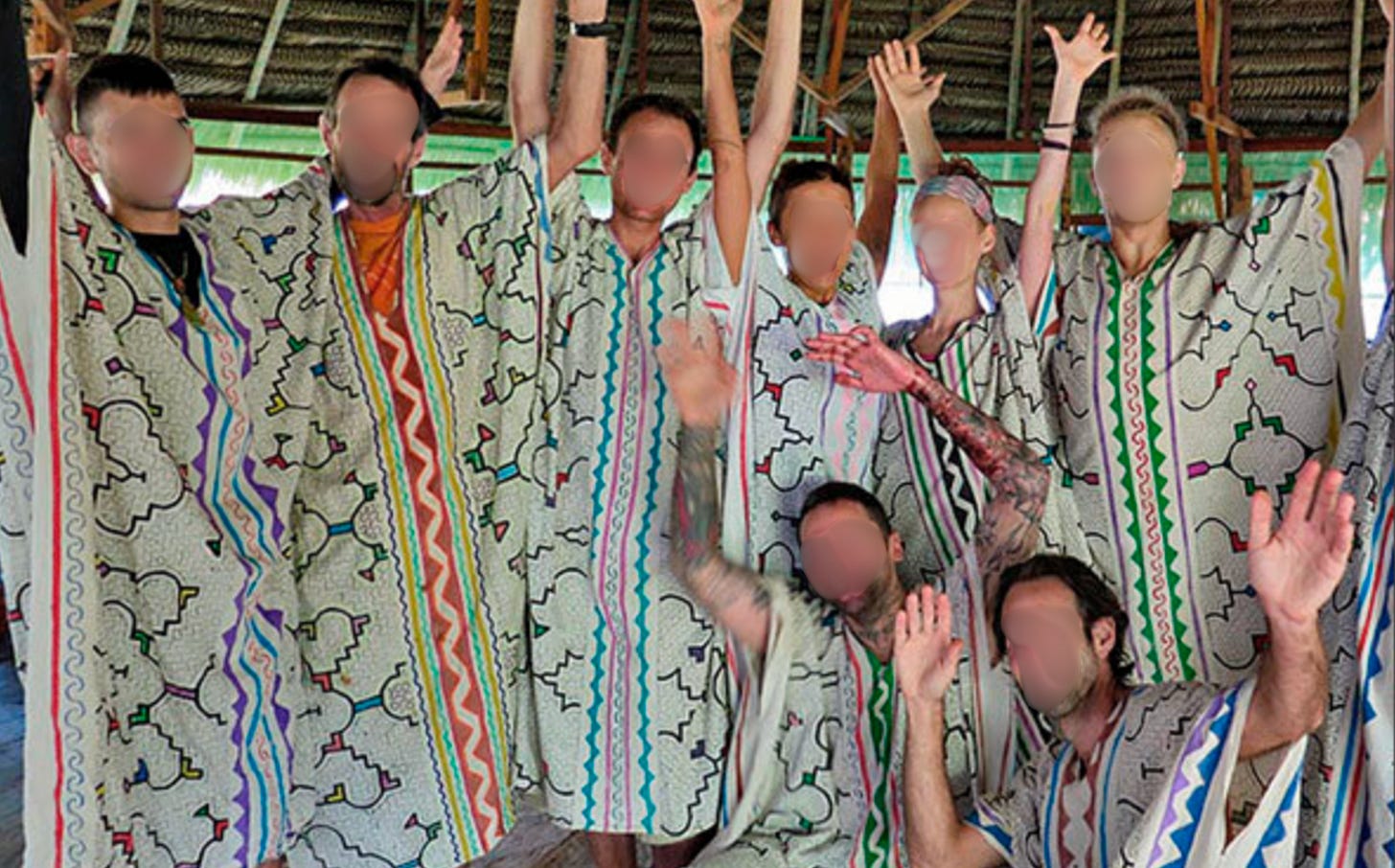
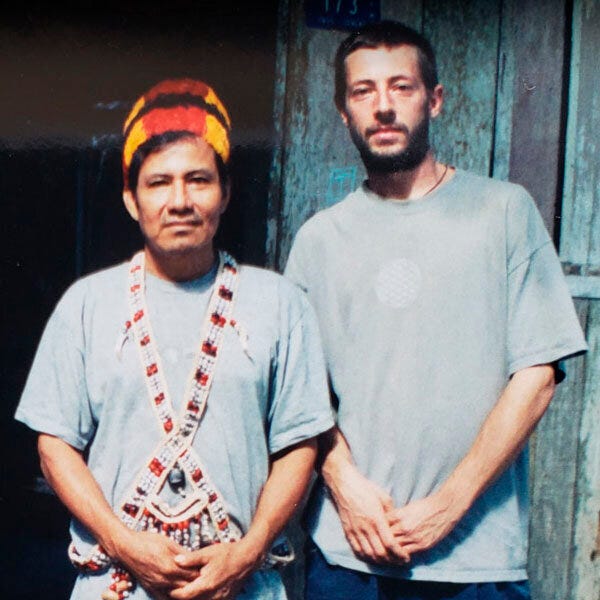
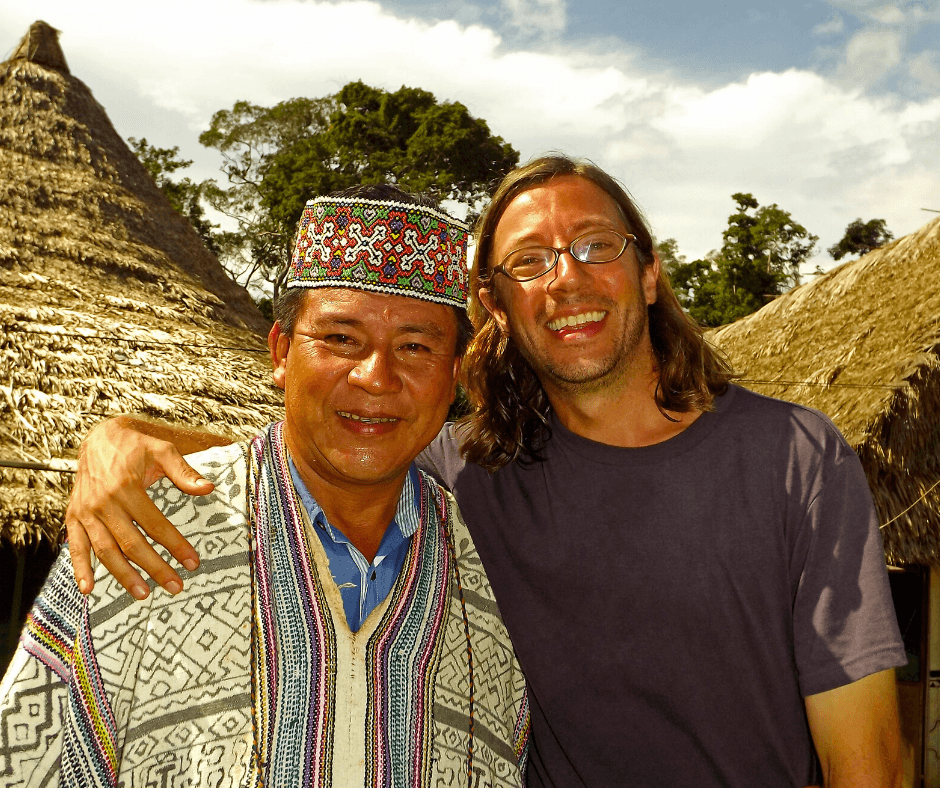
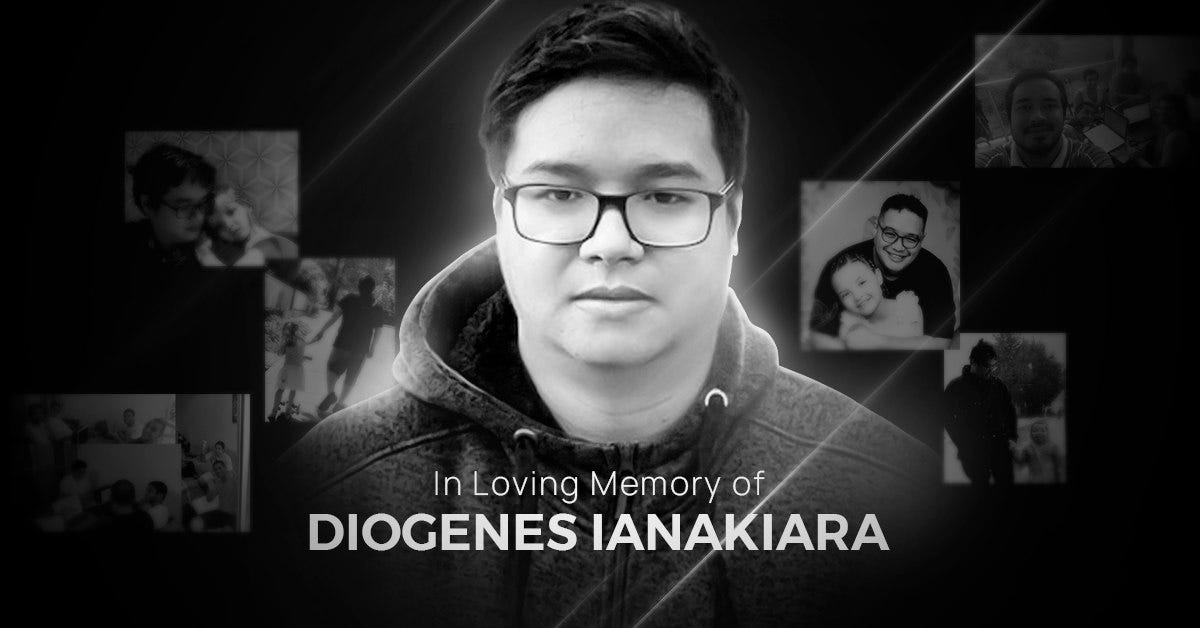
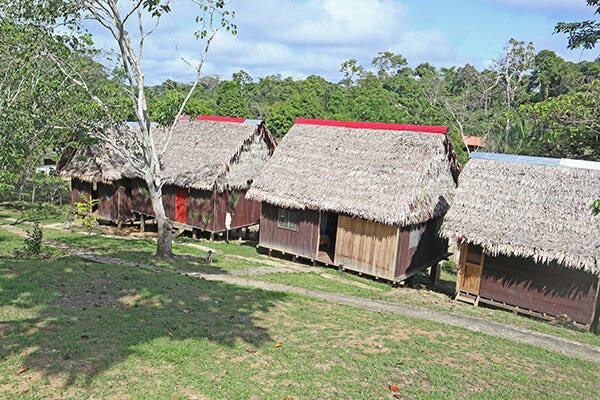





Full support. I see initiates from this group grandstanding with their Mapacho pipes on Instagram feeds, becoming advice columnists of sorts—much of their “advice” harmful—gaslighting people into thinking that the issues they’re having with toxic spaceholders are simply mirrored reflections of work they need to do on themselves. It leaves no room for feedback or accountability, and those who lead can find themselves in an ivory tower of their own making.
I have so much more to say. Much of the medicine world has become a business with little care for safety. I’m still in my own process as I sort through what I encountered with this lineage, thankful that I left and have started to form my own root system.
Thank you for bringing these serious issues to light. I write as someone who participated in the course and experienced unsafe conditions over two months; conditions that left many of us traumatised and deeply disappointed in the foundation. The article’s reporting resonates with my experience at the Ayahuasca Foundation.
For many of us, the facilitators were a rare source of safety and support in an environment that nonetheless felt dangerous. While their care was appreciated, it does not absolve the broader organisational failures and the fact that we were consistently put at avoidable risk.
It was not mentioned in the article, but Frank sent several people death threats once he was removed from the course, just days before it ended. Carlos arranged for him to stay in 'La Casona' hotel, and then booked everybody else in at the same $30-a-night hotel, despite knowing that Frank was waiting for us and was clearly capable of harm. I personally booked an alternative hotel at my own expense once I learned that Carlos had refused to move us to a safer space. A decision that he made in the comfort of his own home in the USA.
I’m still processing the trauma I endured, and I know others are too. I'm feeling let down, harmed, and betrayed. I sincerely hope that this ordeal becomes a catalyst for real change: that leadership takes accountability, learns from harm, and prioritises the safety and well‑being of future participants.
This cannot happen again.